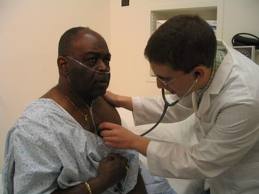What’s the best way for medical students to learn clinical skills? Most medical schools have revamped their curricula to include some clinical training from the first year of medical school. This is a welcome change from the previous model of medical education in which clinical training was wholly delayed until the third and fourth years of medical school.
Some schools start the process by having students spend time in the community alongside physicians who serve as mentors. Students often spend a year with the same clinician, observing him or her care for patients over an extended period of time. Through these experiences students begin to acquire clinical skills and develop an understanding of longitudinal care.
Schools also use “standardized patients” (also called “simulated patients”)— actors who pose as patients — to help students learn clinical skills. Johns Hopkins uses standardized patients as does George Washington, the University of Pennsylvania, Stanford, Emory, and many other medical schools. By using actors, medical students can practice their skills taking a medical history and doing a physical exam before doing this with real patients. Students are often videotaped with standardized patients so that they can assess their skills and how they might improve. They are often also observed by physicians who then provide commentary and suggestions for improvement. This is a wonderful learning opportunity for medical students.
The use of standardized patients does not stop after medical school ends. Residency programs also use actors to help teach interns and residents how to deliver bad diagnoses to patients. Montefiore Medical Center uses standardized patients in its training programs as does the University of Pittsburgh, the University of Texas, and many other medical centers. Standardized patients are also used to assess residents’ clinical skills during their training.
–Liza Thompson, Expert Medical School Admissions Consulting

